Pro Tools, the industry standard audio recording software program, originally was made for the Mac. So there are always going to be folks who think every issue with Pro Tools when using Windows is down to the fact that it is Windows. Well, even though Pro Tools has been usable on Windows since the mid-1990s, there are still some things about the Pro Tools – Windows combo that causes problems (yeah, cuz no other software ever has problems on Windows – but I digress).
Here is a short article on how to fix certain issues with sound cards or launch issues in Pro Tools by clearing preferences. A pretty easy fix.
Read the article here: http://obediatutor.tumblr.com/post/7701315777/how-to-clear-pro-tools-preferences-in-windows-to-fix
Archives for April 2013
Controlling Vocal Effects Right From Your Mic? The Sennheiser e 835 fx
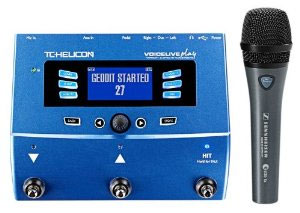 Sennhesier has partnered up with TC-Helicon to create a handheld vocal mic that lest you control vocal effects with a switch on the microphone! The mic is the Sennheiser e 835 fx, and it works with TC-Helicon’s Mic Control(tm) technology.
Sennhesier has partnered up with TC-Helicon to create a handheld vocal mic that lest you control vocal effects with a switch on the microphone! The mic is the Sennheiser e 835 fx, and it works with TC-Helicon’s Mic Control(tm) technology.
The e 835 fx (yes, those spaces are in there for some reason), is a dynamic vocal mic designed specifically to trigger a range of vocal processors (reverb, echo, looping, tuning, doubling, even harmony!) and multi-effects. It works with any and all TC-Helicon vocal effects units, of which there are many. They have eight different single-effect foot pedals, which can be chained together, as well as 10 multi-effects units.
Pictured on the left is the e 835 fx with the TC-Helicon VocalLive Play unit, which contains 200+ presets that are modeled after different music genres by adding layered vocals, background harmonies, compression, EQ ets.
Check out the below video showing a demo of the mic controlling several different effects:
The New Fast Track Solo And Duo Interfaces iPad Compatible
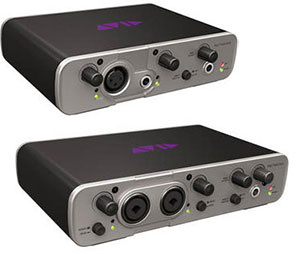 Avid just announced the new Fast Track Solo and Fast Track Duo audio interfaces. I have talked much of the venerable Fast Track audio interface. It’s an affordable ($99.99) good quality microphone preamplifier/converter that plugs into your computer via USB. It has one microphone input, which is sufficient for voice-over home studios, as well as most music recording. I have recorded many an album entirely with a single input. It’s best for singer/songwriter stuff where you don’t need to record an entire band at the same time.
Avid just announced the new Fast Track Solo and Fast Track Duo audio interfaces. I have talked much of the venerable Fast Track audio interface. It’s an affordable ($99.99) good quality microphone preamplifier/converter that plugs into your computer via USB. It has one microphone input, which is sufficient for voice-over home studios, as well as most music recording. I have recorded many an album entirely with a single input. It’s best for singer/songwriter stuff where you don’t need to record an entire band at the same time.
Well Avid just announced (in 2013) its brand new versions of both the Fast Track and the Fast Track Pro (the 2-mic input version, which was discontinued in 2012). They are the Fast Track Solo and Fast Track Duo.
Not only do both interface units sport the same compact and portable, high-quality preamps with mic and instrument inputs as their predecessors. They also come with Pro Tools Express. But get this: They now support the iPad!
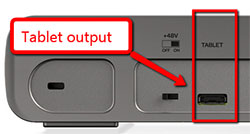 Yup. You can plug this interface unit into either your computer via the standard USB connection, but also into your iPad, where it is compatible with any iOS recording apps. The specs say that it will work with iPad 2 or later, as well as iPad mini. And it appears that the connector is the 30-pin type. I base this on the statement on the Avid site: “ iPad (4th generation) and iPad mini require a Lightning to 30-pin Adapter (sold separately),” that the Fast Track uses the 30-pin connector, as opposed to the Lightning connector that is on the iPad 3 and 4 (now called the “iPad With Retina Display”). Though to me, the “tablet” outlet on the back (see pic on right) doesn’t look like a 30-pin iPad connector. As of 2017, I believe the iPad connector is a lightning type connector. But even if it isn’t, the adapters are easy to come by at just about any electronics store, including Best Buy and Target.
Yup. You can plug this interface unit into either your computer via the standard USB connection, but also into your iPad, where it is compatible with any iOS recording apps. The specs say that it will work with iPad 2 or later, as well as iPad mini. And it appears that the connector is the 30-pin type. I base this on the statement on the Avid site: “ iPad (4th generation) and iPad mini require a Lightning to 30-pin Adapter (sold separately),” that the Fast Track uses the 30-pin connector, as opposed to the Lightning connector that is on the iPad 3 and 4 (now called the “iPad With Retina Display”). Though to me, the “tablet” outlet on the back (see pic on right) doesn’t look like a 30-pin iPad connector. As of 2017, I believe the iPad connector is a lightning type connector. But even if it isn’t, the adapters are easy to come by at just about any electronics store, including Best Buy and Target.

The new Solo and Duo are not universally available – at least not from online retailers like B&H or Sweetwater – as of this writing (April 20th, 2013) ARE available (as of Apr 29th)! You can get them from Amazon:
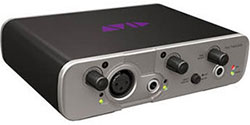 |
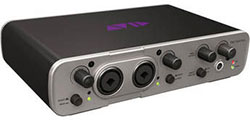 |
I’ll do a review of this new interface as soon as there is one within my reach. Watch this space.
Cheers!
Microphone Tips For Voice-Over Actors
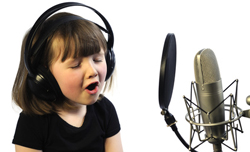 I am a voice-over actor as well as a musician, so Home Brew Audio provides articles and tutorials on both types of recording. Vocal recording for voice-over actors is mostly the same as for musicians but for one thing – there is no music mixed in behind a voice-over recording (at least not usually, and not for long it there is some). So it is that much more important to get the cleanest (least noise) and clearest (best audio quality) recording possible.
I am a voice-over actor as well as a musician, so Home Brew Audio provides articles and tutorials on both types of recording. Vocal recording for voice-over actors is mostly the same as for musicians but for one thing – there is no music mixed in behind a voice-over recording (at least not usually, and not for long it there is some). So it is that much more important to get the cleanest (least noise) and clearest (best audio quality) recording possible.
I found an article on Audiolinks.com yesterday offering 3 microphone tips for voice-over actors. They are good tips, but I wanted to add some things to that post.
The author’s second tip speaks of creating unique tones. He mentions getting closer to the mic to create a deeper sound. This is called “the proximity effect,” and will only work if the mic has a cardioid pick-up (sometimes called “polar”) pattern. Most mics will have that pattern by default, but if you use a multi-pattern mic (my main mic, the Rode NT2-A is one such), you can choose cardioid, figure-8 or omni-directional pickup patterns. So you should be aware that if you are using, say, the “omni” setting, you will not get the proximity effect by moving closer to the mic. By the way, for a review of pickup patterns, see may article Directional and Omnidirectional Microphones – What Are They Good For?
I agree with the “3-tips” tips in the article. But I thought I’d add something about types of microphones. All other things being equal, a voice-over actor should be using a large diaphragm condenser microphone LDC). They typically sound much better than dynamic mics for a variety of reasons (see our article What Are The Different Types of Microphones?). There are some dynamic mics that work well for voice-over, such as the ElectroVoice RE20, which is a very popular broadcast mic. But these are usually more expensive than most LDCs that are excellent for voice-over. The RE20, for example, costs $450.
I did a review of the Audio-Technica AT2035, complete with audio examples, if you’d like to hear what a decent voice-over mic costing $149 sounds like. That post is here: Review of the Audio-Technica AT2035 Microphone.
So enough of my stump-speech. The 3-tips article is here: https://www.audiolinks.com/blog/4-microphone-tips-for-voice-over-actors/
Cheers!
What Is A Decibel In Audio Recording?
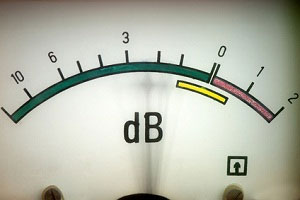 The term “decibel” is used a LOT in audio recording and live sound. You usually see it written as “dB,” and talked about primarily when discussing frequency stuff, especially in the topics of EQ and compression. Besides sounding vaguely like something to do with the decimal system, what does it mean?
The term “decibel” is used a LOT in audio recording and live sound. You usually see it written as “dB,” and talked about primarily when discussing frequency stuff, especially in the topics of EQ and compression. Besides sounding vaguely like something to do with the decimal system, what does it mean?
Well, the short answer – and the one that will be most useful to you without having to know the gory technical details – is that it is a unit of measure for how loud audio is. For example, when you want to know how long something is, you measure in units of inches, feet, yards, etc. Or if you use the decimal system, centimeters, meters, etc. The decibel is something like that, only for loudness of audio, and it uses the decimal system like a lot of things in audio.
But there are some funky things about the decibel. For one thing, it is almost always referred to as a negative number in digital audio, where zero is the top of the scale. What? Yup. It’s like going through the looking glass and doing everything backwards. If you want to make -20 dB audio louder, you turn it up until it gets to -15 dB, or more. See? Funky!
In fact it’s so funky that there is a move afoot (or should that be “adecimeter”? – ha! Sorry:)) to do away with it altogether in the audio recording world! And in a world where obtuse and often needlessly complicated terms are commonplace, that is saying something.
Here is a terrific article from Recording Magazine by Alex Case about the decibel, which is written in a pretty easy-to-understand way. Still, the term “logarithm” does appear. So be prepared to put on your math trousers.
The article is here: http://www.recordingmag.com/resources/resourceDetail/265.html